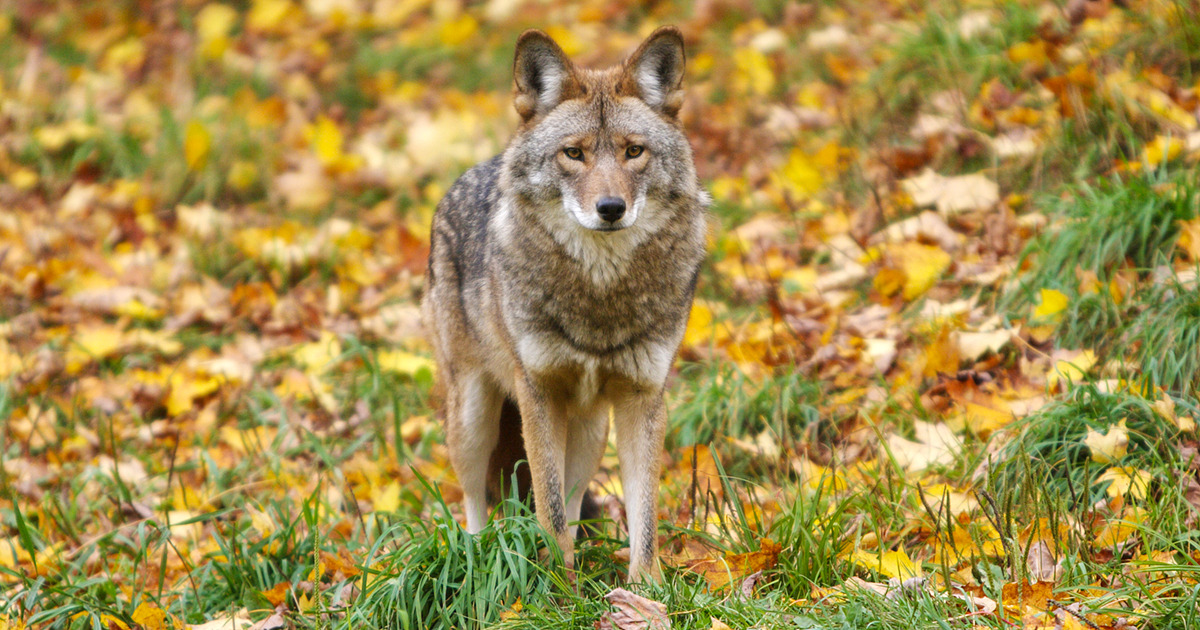
“Why don’t we send them to nature in Algonquin park, where they belong?”
The question is fair, particularly in a community that’s besieged by frightening posts and extreme actions regarding the presence of native and ecological important coyotes. But relocation isn’t a strategy that will work, it could create more conflict, and won’t resolve conflict.
Why? There’s a few reasons:
- Conflict with coyotes (and many other native species) arises most frequently when human behaviour affects nature; such as indirect or direct feeding, easily accessible attractants and off-leash dogs. This means that coyotes aren’t the cause of conflict, they’re simply responding to the lessons humans teach them in our daily actions.
- One study showed that 92.3% of the time when coyotes and dogs were in conflict, the dogs were off-leash. A similar finding was true of bears, with one expert noting than more than half of the 92 bear attacks in a study period involved dogs and many were directly caused by dogs.
- A study showed that removing food sources made the largest change in coyote behaviour – to the point that a tracked coyote simply stopped visiting one neighbourhood.
- Coyote populations reflect resources and pressure. Communities are sometimes concerned that there are “too many” coyotes, often without knowing how many coyotes are in an area at all. When coyotes are persecuted, family stability is impacted and the open territory attracts new coyotes.
- The United States government has systemically tried to eliminate native coyote populations for more than 100 years, using extreme tools like cyanide bombs, introducing mange and extensive, dangerous trapping. They have remained unsuccessful.
- Government officials across Canada are recommending that municipalities and landowners learn to coexist with coyotes – they are here to stay.
- Moving coyotes to a new location is dangerous for them.
- Catching coyotes often involves body-gripping traps – a dangerous activity that can be extremely damaging and traumatizing. It can also affect non-target species such as dogs, cats and people.
- Coyotes live in deeply complex social structures; why they choose to live where they live and among which other coyotes is a personal choice made by that coyote that we as humans cannot currently understand.
- When Eastern coyotes naturally disperse from their home range or family territory, they seek habitat that is not already established by non-related coyotes. We cannot as bystanders know or appreciate these intricate dynamics between one coyote and another.
- Relocating a coyote into another coyote’s territory is not responsible and can cause interspecies conflict.
- Moving any wildlife great distances can also transfer disease, interrupt vital natural ecological systems and processes, and be an extraordinarily traumatic experience for the individual animals.
- Under Ontario regulations, coyotes can be bought and sold like props to roadside zoos and to people who are licensed to keep coyotes “in a train and trial area” – using these living creatures to train dogs to hunt and harass coyotes. This is no life for a wild animal and is a possible destination when residents are told a coyote is being “relocated.”
- Coyotes have lived in Ontario for over 100 years
- Though they may be a new sight to some people east of the prairies, Eastern coyotes have lived in the area for quite some time. Coyotes are exceptional adaptors and, as long as food, water and shelter are available, they can make a home and thrive.
We need to have a thorough understanding of the issues that are escalating human-coyote interactions. We can then help the community with thoughtful information about not only how human behaviour impacts and shapes coyote behaviour, but also how as citizens we can create a wildlife-resilient community. We can offer education and factual information that fosters coexistence. Safety, awareness and education, for citizens and first responders alike, are the most effective, humane and sustainable considerations moving forward.
This article was co-authored by Coyote Watch Canada and The Fur-Bearers.
